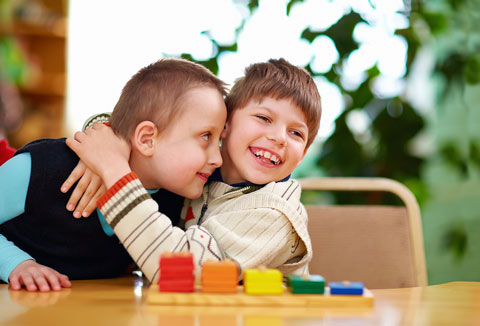Preschool teachers know that children develop and learn at different rates and in different ways. To engage every child, teachers pay attention to how individual children engage with the classroom environment. They also present information in multiple ways, and they offer many opportunities for children to express what they know and can do. This six-step cycle can help you meet the needs of individual children—and of all children.
Step 1: Observe and listen to the child.
- What does he do well? What interests him? How does he interact with others?
- What does he try to do that is hard for him? How does he handle challenges, frustration, distractions?
- What does he say about his classroom experiences?
Step 2: Reflect on what you have observed about the child.
- What did you notice about her approaches to learning and her learning style?
- What simple activities might help her gain specific skills, handle a routine, or expand her knowledge of a topic? Why is it important to make adaptations for her now?
- Does she have an individualized service plan related to special needs? If so, how do your ideas about her needs, interests, and abilities fit with those of her family or the professionals who work with her?
Step 3: Plan simple ways to help the child learn more about a topic, engage in an activity, or manage a specific routine.
- How will your plans be implemented? What materials, experiences, or space will you provide?
- What do you anticipate that the child will gain from these activities?
- If he has a service plan, how will these experiences address his learning goals? (You will need to discuss this with his family and/or any professionals involved with him.)
- What might interfere with this plan?
Step 4: Carry out the individualized plan, while noticing the child’s response.
- How does she engage with the planned activity? Does she seem interested? Bored? Frustrated?
- What does she say about the activity?
Step 5: Reflect on what you observed.
- What seemed to go well for the child? What do you think he gained?
- Were you surprised by anything that happened? What challenges arose?
- What might make a good “next step” for the child? More time with the same activity? A new activity that builds upon what he did?


 PDF
PDF